|
There are 4 different West Virginia Mountain towns in line to be named one of the best this year.
The Best Small Mountain Town category has 3 WV small towns: Lewisburg, Davis, and Fayetteville. The Best Mid-sized Mountain Town category features Morgantown. Vote today for your favorite! By Danielle In 2010, the awards banquet was held during the biennial historic preservation conference. Preservation Alliance was in Fairmont that year, and it was wonderful to be there because Main Street Fairmont had recently received the Great American Main Street Award as one of the most outstanding Main Street programs in the United States. Naturally Fairmont was the focus of this awards banquet, as there were so many notable projects. We had the banquet at High Gate Carriage House, which was a real treat and was built in 1910 for James Edwin Watson, the son of James Otis Watson who was the founder of the American Coal Company (Consol). Horace Trumbauer of Philadelphia designed the house in the Elizabethan half-timber style. Browse the gallery for photos of the award winning projects and scroll down to read about the dynamic honorees. Most Significant Endangered Property Save – Marion County Jail, City of Fairmont Historic Landmark Commission, Jo Ann Lough and Randy Elliott, for restoration efforts of the jail and combining it with the Marion County Historical Society’s Museum Complex.
Community Preservation Award – Main Street Fairmont for outstanding community preservation efforts. Vera Sansalone and Sandra Scaffidi tirelessly worked at Main Street Fairmont to rejuvenate the downtown area, as well as preserve the town’s historic treasures. Preservation Achievement Award – Former Congressman Alan Mollohan for his lifelong efforts in preservation-based economic development. Mollohan played a pivotal role in the preservation of the 1921 bridge that connects East and West Fairmont. He strongly supported historic preservation as an economic development tool, and the High Gate Carriage House was another project to which he provided funding. To register for this year’s awards banquet, visit http://www.pawv.org By Danielle Since 2009, PAWV has annually honored notable historic preservation projects and dynamic preservationists at the Historic Preservation Awards Banquet. We at PAWV are gearing up for this year’s awards banquet. It will be on Friday, September 28th, in the ballroom at the Quality Hotel & Conference Center in Harpers Ferry. Instead of revealing the 2012 award winners in this post, I thought it would be fun to spend this weekend recognizing some of our past honorees again. Today’s post will be all about the year 2009 when the PAWV banquet was held at the Keith-Albee Theate in Huntington. This was the year when PAWV honored a property that is located in Jefferson County; the same county where we are having our conference this year. We also honored Greg Coble, formerly with the National Trust for Historic Preservation, with a Preservation Achievement award for his work as a lifelong preservationist and friend of West Virginia. He championed the listing of the Blair Mountain Battlefield among the 2006 America’s 11 Most Endangered Historic Places and the listing of Lewisburg as one of the National Trust’s 2004 Dozen Distinctive Destinations, while similarly promoting the 2007 listing of Morgantown. Greg continues to be an ally in West Virginia’s historic preservation development. There is much more to read and see about the 2009 awardees. Browse through the gallery for photos of each award winning project and scroll down to read about those dynamic folks behind these successful historic preservation projects. Heritage Tourism Award – Main Street Point Pleasant Main Street Point Pleasant is an energetic and vital part of the Revitalization Program of Point Pleasant. From 2003-2009, the Main Street program brought in more than $7 million in investments to the community. Development of the Point Pleasant Riverfront Park includes a 900 ft. dock, 800 seat amphitheater, a small boat marina, pavilion and walking trail. River history from pre-America through the present day is interpreted with interactive exhibits at the River Museum, which also hosts events. The Mothman Museum explores the story of the Mothman Prophecies with videos and documentaries. In addition to these projects, Main Street helped get the building and the money to renovate the tourism and visitors center. In 2008, Main Street made improvements to the downtown streetscape. Building facades were painted; awnings added; and side streets paved. Main Street Point Pleasant’s record of progress keeps going. For more information, click the link: http://www.pointpleasantwv.org/ Heritage Tourism Award – Beckley Exhibition Coal Mine Visitor Center Since opening for underground tours over 40 years ago, the Beckley Exhibition Coal Mine has introduced thousands of visitors and local school children to the important story of how coal built West Virginia and helped industrialize the US. The City of Beckley has been committed to partnering with the Coal Heritage Trail and National Coal Heritage Area to preserve history and make coal-themed heritage tourism a success for southern West Virginia. Beginning in 1961 with an authentic underground tour of the Phillips family drift-mine, the Exhibition Mine complex has grown to include a coal camp house, miner’s shanty, coal camp church, superintendent’s house and a coal camp schoolhouse. The centerpiece of the master plan for development at the mine complex, the 15,000 square foot visitor and interpretive center, themed as a company store, was opened to the public on June 30, 2008. This new center tells the coal heritage story in a thoughtful and compelling manner and complements the re-created coal camp community. Heritage Tourism Award – Sophia Historic District, Winding Gulf Restoration Organization The Winding Gulf area once had as many as 50 coal camps with names such as Hot Coal, Pemberton, Big Stick, and Tams. The declines in the industry left behind many deserted and dying communities that were once home to thousands of coal miners and their families. In 2003 a group of Helen Community members, out of concern for their safety and the well-being of the children living there, came together to form the Winding Gulf Restoration Organization (W. e. G.R.O. w) and began to work on projects to benefit the community. Since then, this dedicated group of volunteers has formed a Community Watch, built a playground, erected a Coal Miner’s Memorial, lobbied successfully for a modern waste water treatment system and completed several community beautification projects. As one of the most intact, remaining coal camps in the region and very proud of their history, WeGrow began to look for ways to preserve their history and share it with others. Working with the Coal Heritage Highway Authority and Karen Vuranch of WV Enterprises and other organizations in the area, WeGROW developed “Journey through the Coalfields,” a guided bus tour of the Winding Gulf Coalfield along a portion of the Coal Heritage Trail. Tour stops included the Winding Gulf Coalfields, Stotesburg Community Church and the Sophia Historic District. Most Significant Endangered Property Save – Jefferson County Jail, Carol Gallant, Kevin Sarring, Jim Whipple, Doug Estepp, Matt Grove, and Tom Michael
The restoration of the Jefferson County Jail followed a six-year legal fight to save it from the wrecker’s ball. This fight was led by a very determined lady, Carol Gallant, who would not give up until she saw the jail restored. Located directly behind the famous courthouse where John Brown was tried for treason, the Jefferson County Jail is listed as a contributing element of the Downtown Charles Town Historic District. That didn’t stop the Jefferson County Commission from voting 5-0 to tear it down in October, 2000. The commission ignored the state law requiring a Section 106 review and approved the demolition contract. The story goes on to include a court battle along with new discoveries of the jail’s historic importance such as its association with the Battle of Blair Mountain. And while local support grew for restoration, the commission continued to fight it. In 2002, the West Virginia Supreme Court ruled unanimously that the jail could not be razed pending the “section 106” review. By 2006, new county commissioners had been voted into office, and they all voted to restore the structure to meet county needs. Architect Matt Grove of Grove Dall’Olio was selected to oversee the work. Best Historic Preservation Tax Credit Project – Bennett Square, formerly Wheeling Public Library, McKinley Associates and Walters Construction Local residents remember it as the Wheeling Public Library or perhaps as the location of a special event, but the building which served the public for more than 90 years has been restored for a new purpose. In 2007, David H. McKinley, managing director of McKinley Carter Wealth Services, purchased the former library. McKinley has restored the building following the Secretary of Interior Standards for Rehabilitation. He renamed it Bennett Square after his great-, great-grandmother, Sally Maxwell Bennett, who had given the library a collection of books from her travels. The total renovation project included architectural elements as well as major electrical and mechanical systems design. The project created high quality office space in this historic facility which is now home to the financial services firm, McKinley Carter Wealth Services, in addition to being the Wheeling office of Dinsmore & Shohl Attorneys. Historic Preservation Lifetime Achievement Award – The Keith-Albee Theatre, the Hyman Family In 2009, PAWV and the Keith-Albee Performing Arts Center Co-Presidents, Senator Bob Plymale and David Tyson, presented the Hyman Family with a Lifetime Achievement Award for the Keith-Albee Theatre. The award was presented to Derek Hyman in honor of Abe B. and Sol J. Hyman, who had the vision and fortitude to build such a grand theatre for the people of Huntington. Abe’s sons, Jack S. and Edwin D. Hyman, whose love and respect for their father and uncle led them to preserve the Keith-Albee Theatre, keeping it operational for decades. Because of this legacy, Derek and his family donated the Keith-Albee Theatre to the people of Huntington, and it now functions as the Keith-Albee Performing Arts Center for Marshall University. For the Preservation Alliance of WV conference, Sept. 27-29, in Jefferson County, there has been a change of Plenary Speaker on Friday afternoon.
Instead of Dr. Vishakha Maskey presenting, we will be having Dr. Peter Schaeffer from West Virginia University’s Division of Resource Management. Here’s a sneak peek into Peter’s talk. Sounds intriguing! On the Logic and Limitation of Economic Approaches in Historic Preservation Since the 1980s, economic market solutions to public policy problems have gained acceptance in such areas as environmental protection and historic preservation. This presentation explains the logic and philosophy behind such economic approaches. In so doing, the presentation indicates limitations of an economic approach, particularly when economic values conflict with non-economic values, such as those labeled sentiment and symbolism by the Walter Firey, a pioneer in the field of urban ecology. You can register for the conference at http://www.pawv.org/conferences/conf12.htm. Guess who we are nominating?
The Coal Heritage Highway Authority and National Coal Heritage Area Authority work to preserve, promote and interpret the rich coal heritage of southern West Virginia. Throughout the region, there are many individuals, communities and organizations that perform that work on their own, or in partnership with the two Coal Heritage Authorities. To honor the work of these people, the Coal Heritage Highway Authority and National Coal Heritage Area have implemented an award program to acknowledge the work that is being done to preserve coal history. Once again the agency will recognize these outstanding achievements and is now accepting nominations for award winners is six different categories. Projects must have taken place within the National Coal Heritage Area which included the counties of Mercer, McDowell, Raleigh, Summers, Wyoming, Fayette, Boone, Logan, Mingo, Wayne, Lincoln, Cabell and the Paint Creek and Cabin Creek watersheds in Kanawha County or provided a benefit to these counties. The Nick Joe Rahall Award for Outstanding Achievement in Coal Heritage Preservation: Presented to an individual who exemplifies the spirit of hard work of the men and women of past coal communities. This award is given to acknowledge years of service and dedication the individual has made to coal heritage projects that have had significant impact in the National Coal Heritage Area. The Coal Heritage Award for Excellence in the Arts: Presented to an individual, community or organization who has captured the history of coal in artistic endeavors within the National Coal Heritage Area. This award acknowledges the creative efforts that bring coal history to life through the arts. This includes, but is not limited to, dramatic performances, music composition or recordings or the visual arts. The Coal Heritage Marketing Award: Presented to an individual, organization or community that has created an outstanding marketing program promoting an attraction, community or event within the National Coal Heritage Area. This included, but is not limited to, brochures, print ads, web site design, television or radio ads or earned media pieces. The Coal Heritage Interpretation Award: Presented to an individual, organization or community that has achieved excellence in interpreting coal heritage within the National Coal Heritage Area. This includes, but is not limited to, exhibits, walking tours, interpretative brochures, audio guides, travel guides, docent interpretation or guided tours. The Coal Heritage Preservation Award: Presented to an individual, organization or community for an exceptional project that preserves artifacts or structures relating to coal heritage within the National Coal Heritage Area. This includes, but is not limited to, historic building renovation or restoration, adaptive re-use of historic buildings, designation of historic districts, artifact restoration or display, or oral history collections. The Coal Heritage Research and Documentation Award: Presented to an individual, organization or community for an outstanding research project that includes areas within the National Coal Heritage Area as part of the focus area. This includes but is not limited to articles, books, oral history projects, websites, or photography collections. In 2012, the awards will be presented at the 2012 Miner’s Celebration Conference at a special reception to be held on October 4, 2012 at the Tamarack Conference Center. Nominations will be accepted for any worthy individual, organization, group or community. Nominations must be received by September 4, 2012. An entry form to submit a nomination for one of the above categories is available at http://www.coalheritage.org, by calling the office of the Coal Heritage Highway Authority at 304-465-3720 or by emailing Linda Hawkins at [email protected]. By Amanda Whitmore, Preservation Alliance of West Virginia VISTA PAWV’s 2012 conference will be in Jefferson County September 27-29, and there will be a walking tour on Thursday evening of historic Shepherdstown. I am a native of Shepherdstown, born and raised, and have seen many changes in this little town. I recently was pushing my son in his stroller through Shepherdstown and really began to see this town with new eyes. I will not have you read through my own personal walking tour of Shepherdstown, you can experience the town your own way, but I would like to share a few of the buildings and sites in which I have a renewed interest. First is the Tobacco Warehouse, circa 1788, which has changed a lot in the past few years. Growing up, it was always the vacant stone building by the river, barely noticeable with all the overgrowth surrounding it.. A variety of groups would scheme about potential uses but nothing came to fruition. The Warehouse is the only standing commercial structure on the riverfront and worthy of saving to help tell the history of the Potomac River. A group formed in the early 2000’s, the Friends of the Shepherdstown Riverfront, to do just this thing. They successfully stabilized the warehouse, repointed the exterior masonry, cleared the debris, and nearly gutted the entire inside of old water and sewer equipment to ready the building for an eventual new use.
The block of East German Street, between the railroad tracks and the Yellow Brick Bank Restaurant, contains the grandest homes of Shepherdstown; however this is not the streetscape I want to describe. My favorite street is New Street. It is a quiet, well preserved street with a great collection of colonial style houses, ranging from brick to wood siding and detached to row houses. Just one block off the main street of Shepherdstown, it includes worn brick sidewalks, large trees, an old cemetery enclosed by a tall stone wall, wrought iron fences, and even a babbling brook, well not a brook, but the Town Run. The Town Run flows through several backyards on New Street before heading to German Street. Lastly, I want to take you to two of my favorite downtown establishments, Mellow Moods and the Mecklenburg Inn. Yes, they provide great refreshments, but I enjoy these businesses for their history and character-defining building elements. Mellow Moods is a newer business that opened in a building that had sat vacant for many years. It was once a dry goods store, and a portion of the old counter is still in use. The wood floors and old tin ceiling were also maintained in the renovation of the building. The Mecklenburg Inn, affectionately called “the Meck,” was at one time the post office for Shepherdstown. The bathrooms are now located where the tellers used to sit and distribute mail. Tin covers the walls and ceilings, and the floors and fire places are original. I love sitting in these places and imagining the many people who have come into these buildings over the years to carry out their business. These are just a few of my favorite places in Shepherdstown. I hope many of you reading this blog come to the conference in September and take the tour of Shepherdstown. It is so rich in history and has so many fascinating stories.
After a short, but informative powerpoint presentation on the value of restoring old wooden sash windows, Lynn introduced the volunteer work crew to the wonders of steam as it relates to the removal of glass and paint from window sashes. The individual pane steamer is a handy device for removing glass from sashes. Ten sashes with six panes each were to be worked on. Of the sixty panes, only three were lost to breakage, and they were broken in the sash before the process started. All participants were amazed at the efficiency of this device because we had all tried to remove glass with various hand tools. The steam process is quick, easy, and with no loss of glass.The steam chest that Lynn brought was used to soften paint on the sashes after glass removal. With 20 to 30 minutes exposure to steam in the cabinet, paint can be removed with appropriate scrapers with little effort and no paint/lead dust. Because not all of the paint could be removed on the 14th, Lynn left a steam generator and cabinet for follow-up use. Progress continues to be made on preparing the sashes for painting and reglazing.
Three workshop participants rehabbing windows for their restoration project.
Thank you to our blog contributor, Frank Roleff, for this complimentary article. For more information about having Lynn at one of your workshops, click HERE. Don’t believe how easy it can be to rehab your own windows? Watch this video and you’ll be convinced! Historic Window Rehabilitation with Lynn Stasick Preservation Alliance of WV is gearing up to start reviewing nominations to the 2013 West Virginia Endangered Properties List! For those not directly involved in a historic preservation organization, you might be wondering what an endangered list is. Endangered lists are used by preservation organizations to bring attention to the plight of at-risk properties and to provide assistance to the dedicated organizations involved in their preservation. The selected properties contribute to our understanding of our heritage, which will be diminished if they are lost. Types of properties already listed on the PAWV Endangered Properties List include archaeological sites, bridges, county courthouses, churches, hotels, and schools, among other types of structures/landscapes. To be considered an endangered historic resource, these properties must be listed on or eligible for listing on the National Register of Historic Places and meet other criteria such as historic significance, preservation emergency and local support. Local support is essential because we want to work directly with local property stewards or organizations working to save the property. They are the grassroots forces with the ideas for how these historic treasures can be reused to benefit their community, and they are ultimately doing all the major work. Without local support for the preservation of an endangered resource, it is impossible for us to help. So what’s great about this list is that it highlights the efforts of local people. Another key point is that the list helps us to identify local preservation work, and as the statewide nonprofit historic preservation organization, we can provide free technical assistance (grant writing, structural needs assessments, etc.), advocate and market for the group, and bring this project to the forefront of decision makers and preservation professionals in the state. The ultimate goal of the endangered list is to de-list the properties. Preservation successes call for de-listing and, unfortunately, losses do too. But for a success we hope to raise enough support for the local property stewards to rehabilitate, protect, and/or preserve the endangered property. If it is appropriate, another aim we have with this list is to secure another use for the historic resource. Just because something is historic, it does not need to be frozen in time or turned into a museum. Historic preservationists frequently advocate for a new use and reuse of a historic structure all the while preserving the historic details that make this site so significant and memorable. We want to reuse our historic treasures, but we don’t want to forget what made them so important to us to initially. Landscapes and the built environment are physical reminders of our past helps us to plan for our future. Properties are selected through a competitive application process. If you have a property in mind for the 2013 endangered list, click HERE for a nomination form and information on how to apply. Applications are due 15 November 2012. For more information on previous years lists, visit HERE. I am really excited about having some of the conference events at Claymont Court, which was constructed in 1840 in the Georgian style for Bushrod Corbin Washington, a grand-nephew of George Washington. I had the pleasure of staying there last fall while scouting conference locations and enjoyed my over-night stay in the mansion. No ghost encounters for me, fortunately, and when I walked the grounds alone one evening, I felt an overwhelming sense of calm from the site. The historic mansion and grounds are beautifully-preserved, and it’s a very peaceful environment – a great place for learning! From my short stay, I can see why John G. Bennett chose this as the location for his nine-month Fourth Way school back in 1974. Not only is the mansion fabulous, but its location is very quiet, as it is tucked among rolling hills about 4 miles outside of Charles Town. Conference participants are going to learn so much during their time at Claymont Court, and I think it will be relaxing, as well. While at Claymont, you can wander the grounds, visit the new Native American museum, or venture to the grand barn. It is a place for introspection and self-development, as intended by Mr. Bennett, but it is also the perfect setting for spending time with like-minded folks. When you aren’t engulfed in one of the educational sessions, you will have time to share stories with others and learn from sharing these experiences. I hope many people will take advantage of this opportunity and join me in enhancing the historic preservation ethos throughout the mountain state.
|
News and NotesCategories
All
Archives
May 2024
Subscribe to our mailing list to receive e-news updates on historic preservation news and events in West Virginia.
|
Get Involved |
Programs |
Contact UsPreservation Alliance of West Virginia
421 Davis Avenue, #4 | Elkins, WV 26241 Email: [email protected] Phone: 304-345-6005 |
Organizational Partners:
© COPYRIGHT 2022 - PRESERVATION ALLIANCE OF WEST VIRGINIA. ALL RIGHTS RESERVED.

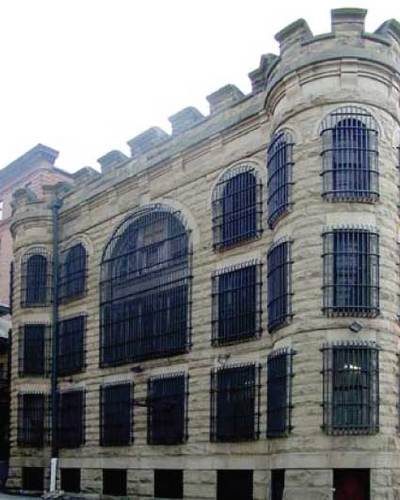











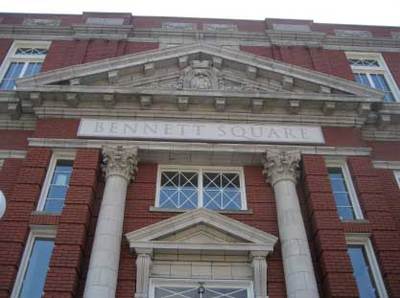
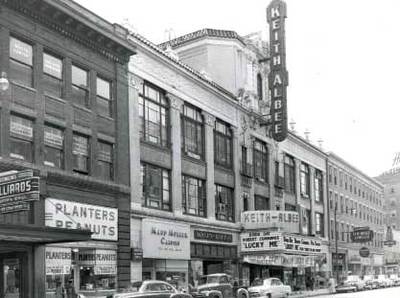

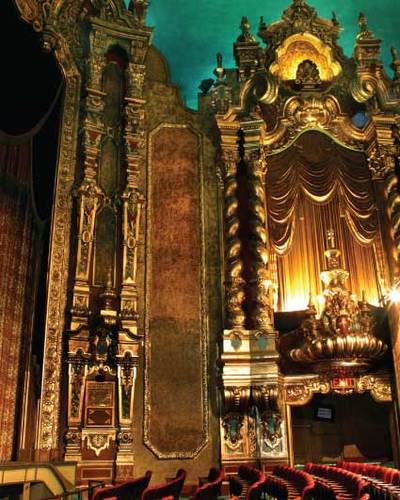

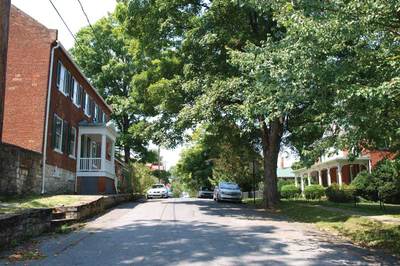
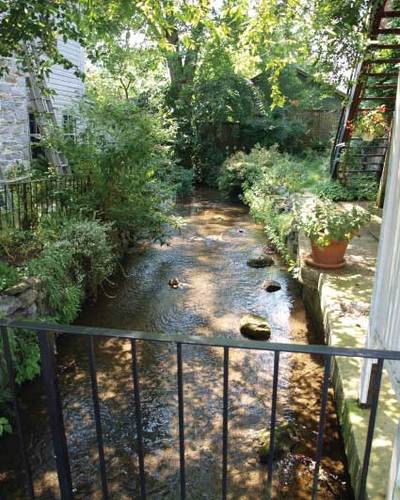


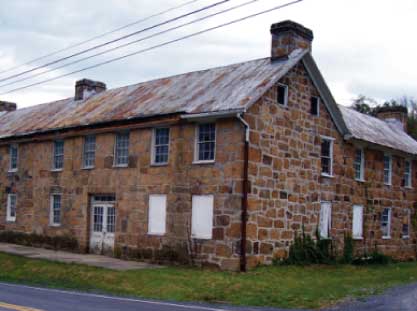
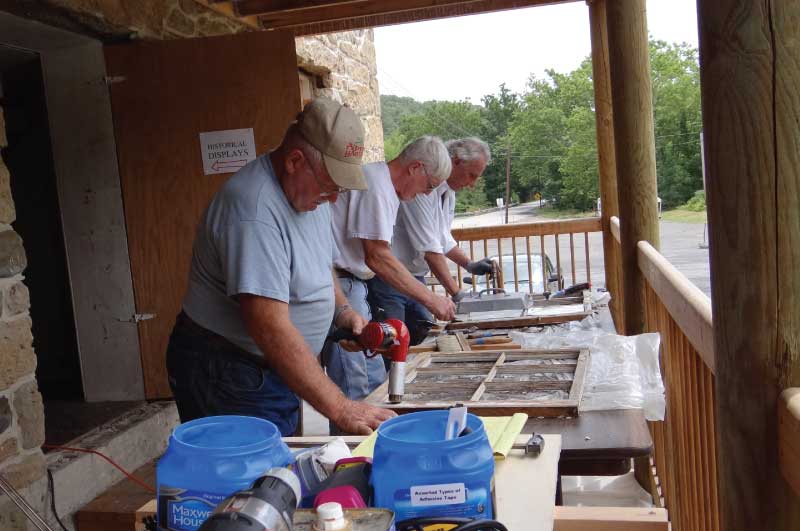





 RSS Feed
RSS Feed



